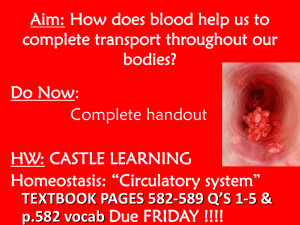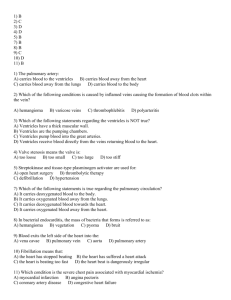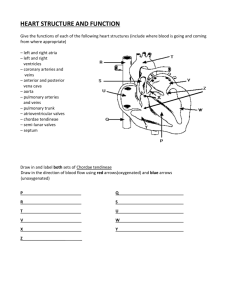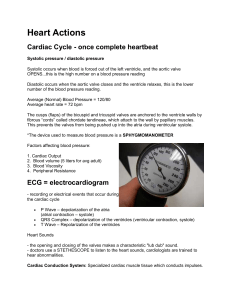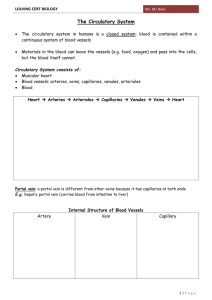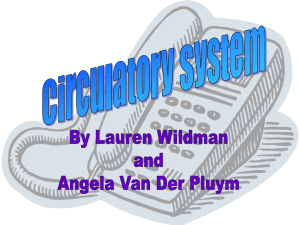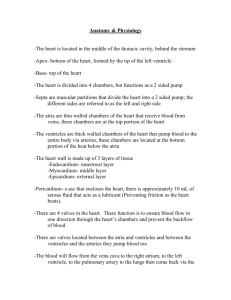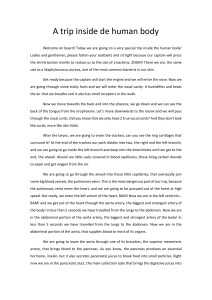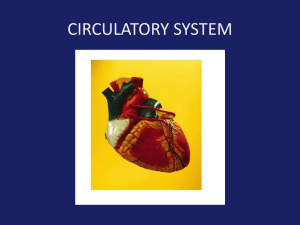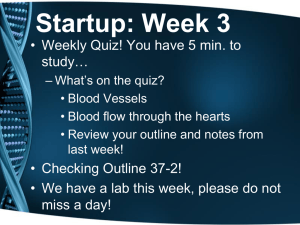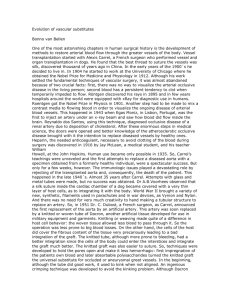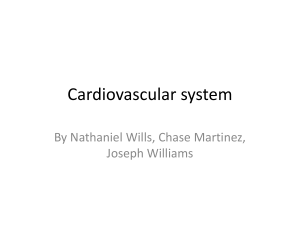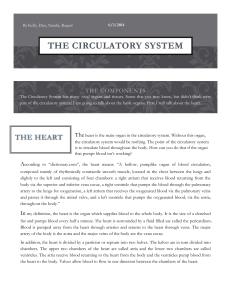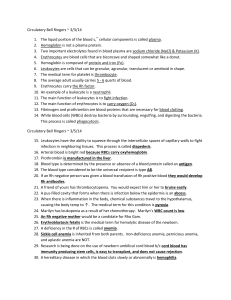Chapter 15
advertisement
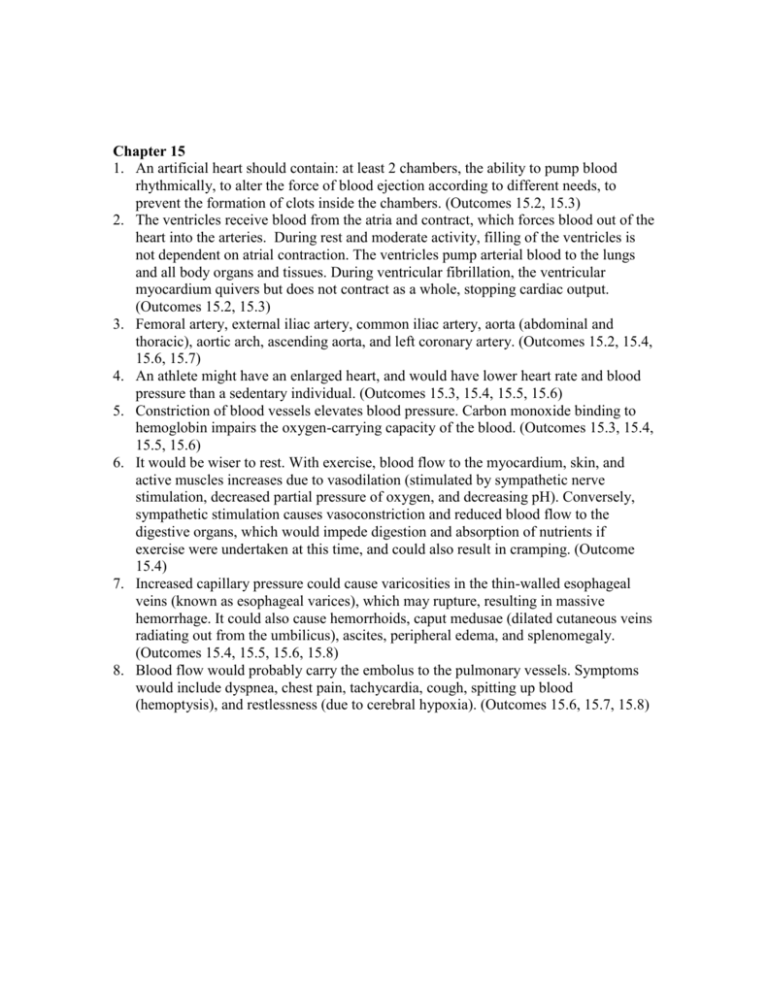
Chapter 15 1. An artificial heart should contain: at least 2 chambers, the ability to pump blood rhythmically, to alter the force of blood ejection according to different needs, to prevent the formation of clots inside the chambers. (Outcomes 15.2, 15.3) 2. The ventricles receive blood from the atria and contract, which forces blood out of the heart into the arteries. During rest and moderate activity, filling of the ventricles is not dependent on atrial contraction. The ventricles pump arterial blood to the lungs and all body organs and tissues. During ventricular fibrillation, the ventricular myocardium quivers but does not contract as a whole, stopping cardiac output. (Outcomes 15.2, 15.3) 3. Femoral artery, external iliac artery, common iliac artery, aorta (abdominal and thoracic), aortic arch, ascending aorta, and left coronary artery. (Outcomes 15.2, 15.4, 15.6, 15.7) 4. An athlete might have an enlarged heart, and would have lower heart rate and blood pressure than a sedentary individual. (Outcomes 15.3, 15.4, 15.5, 15.6) 5. Constriction of blood vessels elevates blood pressure. Carbon monoxide binding to hemoglobin impairs the oxygen-carrying capacity of the blood. (Outcomes 15.3, 15.4, 15.5, 15.6) 6. It would be wiser to rest. With exercise, blood flow to the myocardium, skin, and active muscles increases due to vasodilation (stimulated by sympathetic nerve stimulation, decreased partial pressure of oxygen, and decreasing pH). Conversely, sympathetic stimulation causes vasoconstriction and reduced blood flow to the digestive organs, which would impede digestion and absorption of nutrients if exercise were undertaken at this time, and could also result in cramping. (Outcome 15.4) 7. Increased capillary pressure could cause varicosities in the thin-walled esophageal veins (known as esophageal varices), which may rupture, resulting in massive hemorrhage. It could also cause hemorrhoids, caput medusae (dilated cutaneous veins radiating out from the umbilicus), ascites, peripheral edema, and splenomegaly. (Outcomes 15.4, 15.5, 15.6, 15.8) 8. Blood flow would probably carry the embolus to the pulmonary vessels. Symptoms would include dyspnea, chest pain, tachycardia, cough, spitting up blood (hemoptysis), and restlessness (due to cerebral hypoxia). (Outcomes 15.6, 15.7, 15.8)

